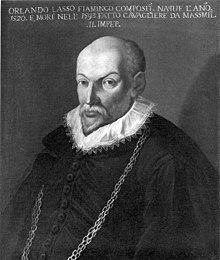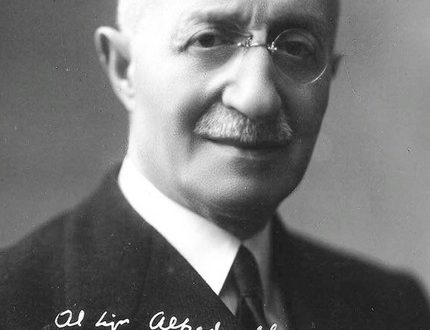
Orlando di Lasso |
Orlando di Lasso
Lasso. “Salve Regina” (Tallis Scholars)
O. Lasso, a contemporary of Palestrina, is one of the most famous and prolific composers of the 2th century. His work was universally admired throughout Europe. Lasso was born in the Franco-Flemish province. Nothing definite is known about his parents and early childhood. Only the legend has survived of how Lasso, then singing in the boys’ choir of the church of St. Nicholas, was kidnapped three times for his wonderful voice. At the age of twelve, Lasso was accepted into the service of the Viceroy of Sicily, Ferdinando Gonzaga, and since then the life of a young musician has been filled with travels to the most remote corners of Europe. Accompanying his patron, Lasso makes one trip after another: Paris, Mantua, Sicily, Palermo, Milan, Naples and, finally, Rome, where he becomes the head of the chapel of the Cathedral of St. John (it is noteworthy that Palestrina will take this post XNUMX years later). In order to take this responsible position, the musician had to have an enviable authority. However, Lasso soon had to leave Rome. He decided to return to his homeland to visit his relatives, but upon arrival there he no longer found them alive. In later years, Lasso visited France. England (prev.) and Antwerp. A visit to Antwerp was marked by the publication of the first collection of Lasso’s works: these were five-part and six-part motets.
In 1556, a turning point came in Lasso’s life: he received an invitation to join the court of Duke Albrecht V of Bavaria. At first, Lasso was admitted to the Duke’s chapel as a tenor, but a few years later he became the actual leader of the chapel. Since then, Lasso has been permanently living in Munich, where the duke’s residence was located. His duties included providing music for all the solemn moments of the life of the court, from the morning church service (for which Lasso wrote polyphonic masses) to various visits, festivities, hunting, etc. Being the head of the chapel, Lasso devoted a lot of time to the education of choristers and music library. During these years, his life took on a calm and fairly secure character. Nevertheless, even at this time he makes some trips (for example, in 1560, by order of the duke, he went to Flanders in order to recruit choristers for the chapel).
Lasso’s fame grew both at home and far beyond. He began to collect and organize his compositions (the work of the court musicians of the Lasso era depended on the life of the court and was largely due to the requirements to write “in case”). During these years, Lasso’s works were published in Venice, Paris, Munich, and Frankfurt. Lasso was honored with enthusiastic epithets “the leader of the musicians, the divine Orlando.” His active work continued until the very last years of his life.
Creativity Lasso is huge both in the number of works and in the coverage of various genres. The composer traveled all over Europe and got acquainted with the musical traditions of many European countries. He happened to meet many outstanding musicians, artists, poets of the Renaissance. But the main thing was that Lasso easily assimilated and organically refracted the melody and genre features of music from different countries in his work. He was a truly international composer, not only because of his extraordinary popularity, but also because he freely felt within the framework of various European languages (Lasso wrote songs in Italian, German, French).
Lasso’s work includes both cult genres (about 600 masses, passions, magnificats) and secular music genres (madrigals, songs). A special place in his work is occupied by a motet: Lasso wrote approx. 1200 motets, extremely diverse in content.
Despite the similarity of genres, Lasso’s music differs significantly from the music of Palestrina. Lasso is more democratic and economical in the choice of means: in contrast to the somewhat generalized melody of Palestrina, the themes of Lasso are more concise, characteristic and individual. The art of Lasso is characterized by portraiture, sometimes in the spirit of Renaissance artists, distinct contrasts, concreteness and brightness of images. Lasso, especially in songs, sometimes directly borrows plots from the surrounding life, and along with the plots, the dance rhythms of that time, her intonations. It was these qualities of Lasso’s music that made her a living portrait of her era.
A. Pilgun





